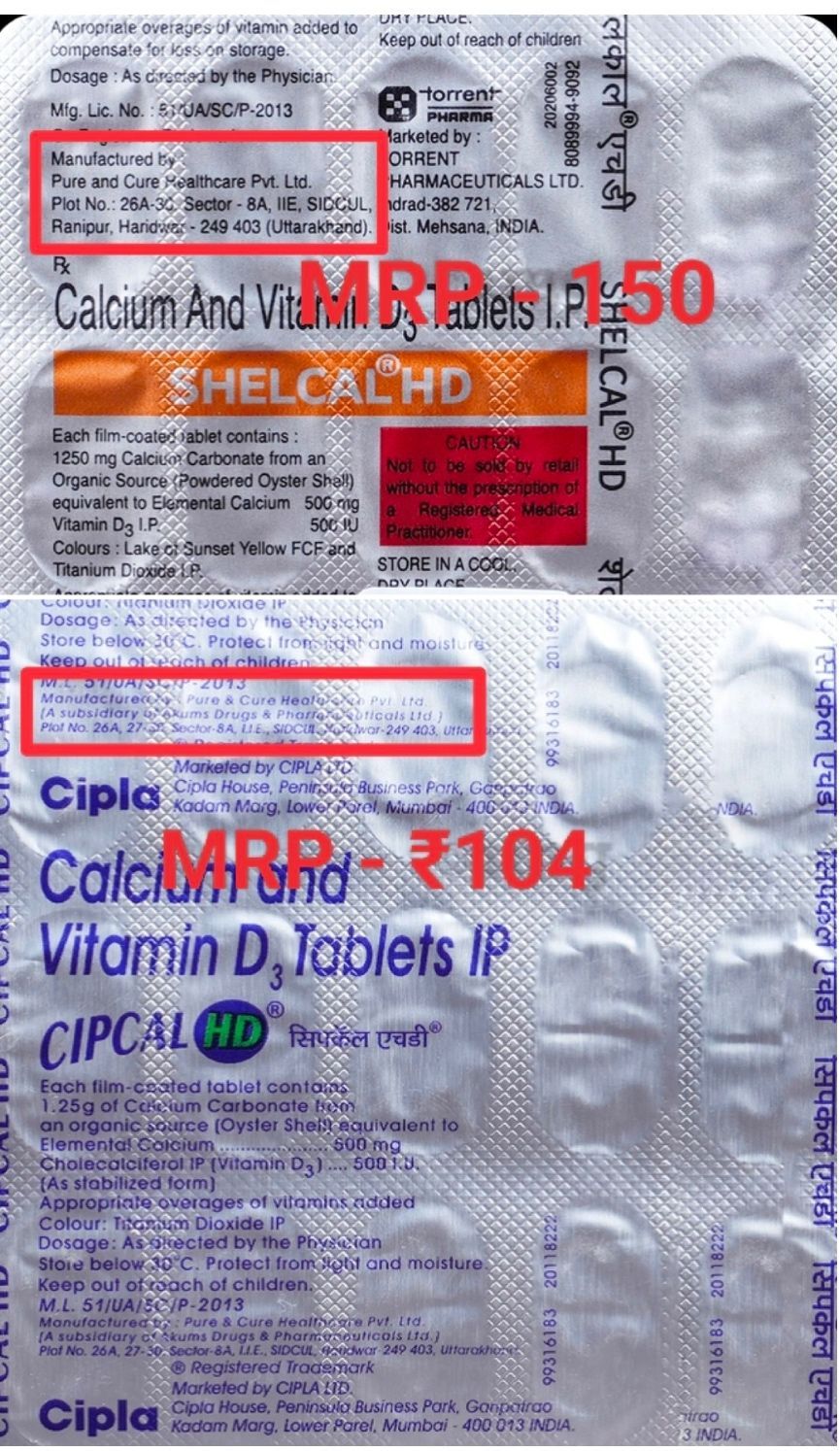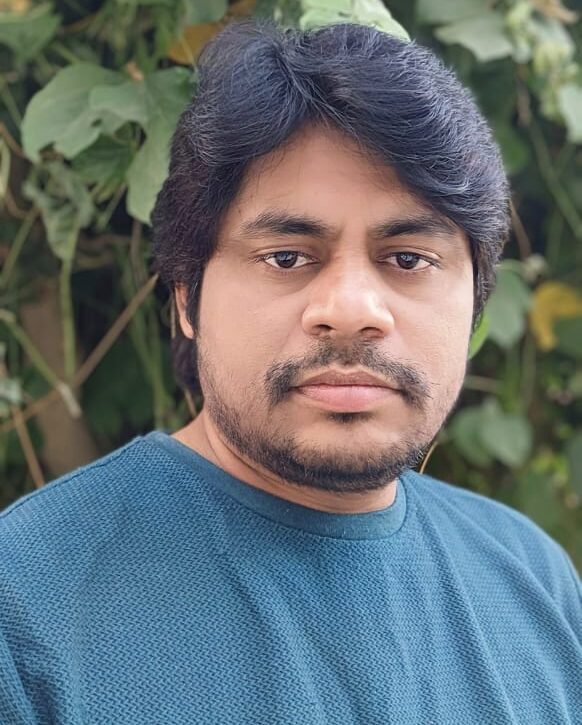Are you unknowingly overpaying for your medicines? Discover how branded drugs cost 50% more than generics—despite being identical. Learn how to flip the strip, make informed choices, and save money safely.
💊 Why Are We Paying 50% More for the Same Medicine? Understanding the Branded vs Generic Drug Pricing in India
Every time you walk into a pharmacy and buy prescription medicine, there’s a good chance you’re paying significantly more—not for superior quality, but for a brand name.
Let’s break it down with a real-life example that might surprise you:
-
Shelcal HD (by Torrent Pharma): ₹150
-
Cipcal HD (by Cipla): ₹104
Both products are manufactured by the same company—Pure & Cure Healthcare Pvt. Ltd., based in Uttarakhand. Both contain the same formulation, same dosage, and are made in the same factory. So why the 50% price gap?
The answer is simple: branding and marketing markup.
🧪 What Are Branded and Generic Medicines?
In India, most consumers believe that “branded” medicines are superior in quality, but here’s the truth:
-
Branded Medicines are marketed under a company-specific brand name, often heavily advertised.
-
Generic Medicines contain the same active ingredients, strength, and dosage form but are marketed without heavy branding.
-
Both types must pass stringent quality and efficacy standards set by the Drug Controller General of India (DCGI).
So, essentially, you’re paying more for packaging, perception, and marketing, not effectiveness.
🧾 The Hidden Truth Behind Pricing
What makes one medicine cost ₹150 and another ₹104 when they’re chemically identical?
Key Factors That Drive the Price Difference:
-
Marketing & Branding Costs
Branded pharmaceutical companies invest heavily in advertising, doctor incentives, and brand visibility. These costs are passed on to consumers. -
Doctor Prescriptions Are Brand Biased
Medical representatives from big pharma companies influence prescribing habits, pushing doctors toward high-priced brands. -
Lack of Consumer Awareness
Most patients don’t know about generics or assume they are inferior—so they don’t ask pharmacists for alternatives. -
Profit Margins
Pharmacies earn more by selling high-margin branded drugs. Naturally, they push these first.
📦 Flip the Strip – The Power of Reading Your Medicine Label
Here’s what many don’t realize: the manufacturer’s name is printed on the back of the medicine strip. That’s your first clue.
Next time you get a prescription:
-
Ask for the salt name (e.g., Calcium + Vitamin D3) instead of a brand.
-
Flip the strip and check the manufacturer.
-
Compare prices of alternatives.
This simple act could save you hundreds to thousands of rupees annually, especially for chronic conditions like diabetes, hypertension, or bone health.
🏛️ What the Government Did Right (And What Needs to Be Done)
We’ve seen effective reforms in the past:
✅ Standardized MRP for Bottled Water
Earlier, a water bottle would cost ₹10 outside and ₹50 in malls or airports. The government enforced uniform pricing—a small but powerful step for consumer rights.
✅ Capping the Price of Cardiac Stents
In 2017, stents were being sold at 3x to 10x their production cost. The National Pharmaceutical Pricing Authority (NPPA) capped prices, bringing relief to thousands of heart patients and saving over ₹4,500 crore.
❗So Why Not Medicines?
Prescription medicines are a larger and more essential market than even bottled water or stents. Yet, pricing remains highly opaque and variable. This needs reform.
🔍 What Does the Law Say?
The Drugs and Cosmetics Act allows the sale of generics and mandates quality standards. However, pricing control applies to only a limited number of essential drugs under the Drug Price Control Order (DPCO).
This leaves thousands of branded medicines outside the purview of pricing regulations—a loophole that allows companies to charge what they want.
💡 The Role of Jan Aushadhi Stores
The Indian Government’s Pradhan Mantri Bhartiya Janaushadhi Pariyojana (PMBJP) promotes generic drugs at affordable prices through dedicated pharmacies.
These stores offer:
-
Generic versions of essential medicines
-
Cost savings of up to 80%
-
Quality assurance through government monitoring
Yet, they remain underutilized, largely due to:
-
Lack of public awareness
-
Reluctance of doctors to prescribe generics
-
Resistance from branded drug lobbies
🧠 Consumer Awareness Is Key
A large part of the problem is psychological. People equate price with quality. But this isn’t always true in pharmaceuticals.
Knowledge = Power = Savings
You don’t need to be a doctor to understand your medicines. Start by:
-
Asking your doctor to write the salt name instead of a brand
-
Discussing lower-cost alternatives with your pharmacist
-
Checking online platforms for price comparisons
-
Visiting a Jan Aushadhi Kendra to explore generic options
📉 The Bigger Picture: Healthcare Affordability in India
India has one of the highest out-of-pocket healthcare expenditures in the world. A significant portion of this goes to medicines. Controlling drug costs is not just a personal finance issue, it’s a public health priority.
Reducing medicine prices will:
-
Improve access to essential treatments
-
Reduce financial stress on middle-class and low-income families
-
Enable better chronic disease management
-
Free up national healthcare resources
📢 Let’s Normalize Affordable Choices
So the next time you walk into a pharmacy, flip the strip.
Don’t just accept what’s handed over the counter. Ask questions. Look for alternatives. Advocate for transparent and fair pricing.
Just like you wouldn’t pay ₹150 for the same water bottle elsewhere, why do it for life-saving medicines?
Same medicine. Same factory. Different label. 50% more.
It’s time to change the script on how we buy medicines in India.
Let’s push for:
-
Clear labeling
-
Transparent pricing
-
Greater awareness
-
Policy change
Your health shouldn’t come with a hidden premium.



